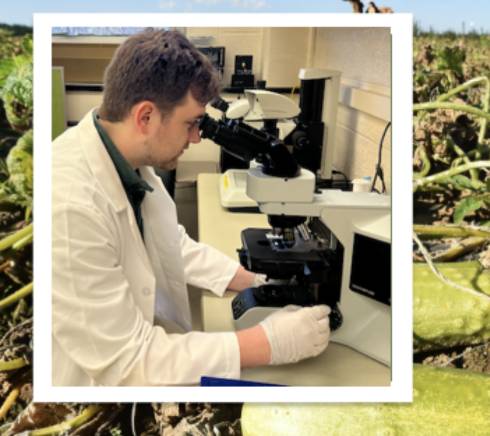Fall 2025 Plant Pathology (PLP894) Seminar Series 1:30PM - 2:30PM PSSB 271 Conference Room
November 3, 2025 1:30PM - 2:30PM

Developing a sustainable management system for cucurbit downy mildew using early detection and in-field fungicide resistance monitoring.
Spafford, J.R., and Hausbeck, M.K.
Michigan ranks first in pickling cucumber acreage, and its cucumber industry is valued at $53.7 million. One of the most devastating diseases cucumber growers face is cucurbit downy mildew (CDM) caused by Pseudoperonospora cubensis, an obligate oomycete. Ideal CDM conditions lead to 80% yield loss of unprotected crops in a short period of time. Since 2025, producing cucumbers has required aggressive fungicide applications. P. cubensis cannot survive winter in Michigan and is introduced to fields via wind from year-round production in greenhouses and southern states. Efforts to track the introduction of the pathogen to the state’s growing regions so that a spray program can be initiated has required the use of volumetric spore traps for sensitivity and accuracy. Several fungicides are registered for CDM control, but pathogen resistance has developed limiting management options. One objective of this research was to conduct an in-field comparison of the volumetric and cyclone spore traps for the detection of low levels of P. cubensis airborne sporangia. A second objective was to monitor pathogen resistance to key oomycete fungicides with in-field research plots. Based on 2025 data, the cyclone trap consistently detected P. cubensis more frequently than the volumetric trap. The in-field trial to monitor resistance and improve grower recommendations consisted of eleven commercial fungicides applied every 7 days. Disease assessments confirmed that oxathiapiprolin available as Orondis Opti provided highly effective control, while fungicides representing FRAC 11 were not effective. Results of pathogen early detection and selection of effective fungicides can reduce unneeded fungicides applications while improving CDM control.



 Print
Print Email
Email